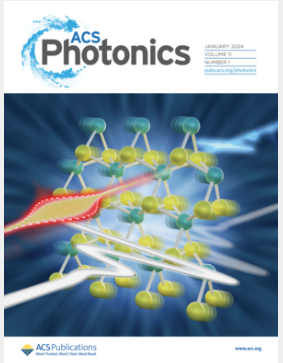Miniaturized Spectroscopy Based on Lens-Free Speckle Image Encoding
IF 6.7
1区 物理与天体物理
Q1 MATERIALS SCIENCE, MULTIDISCIPLINARY
引用次数: 0
Abstract
Miniaturized spectroscopy has attracted extensive interest recently due to its advantages of high integration and low cost. Image encoding is an emerging and promising technique to connect in-plane field distributions and spectral components, considering its perfect match with mature image sensors in portable platforms. Usually, an object lens and a large working distance are required to resolve the wavelength-dependent images encoded by light dispersion nanostructures, which inevitably increase the complexity for optical alignment and the system footprint. Here, a lens-free speckle image encoding technique was developed for computational spectroscopy by integrating disordered gold nanorods onto a CMOS image sensor with an entire thickness of less than 2 mm. A convolutional neural network (CNN) algorithm was applied to decode the image-spectrum relation by classifying the images with a multilayer perceptron to extract high-level features, overcoming the high correlations of the encoded images in such a compact configuration. Accurate spectral reconstruction was demonstrated with a peak wavelength deviation of less than 1 nm. Furthermore, the required CNN training data set scale or training time was found to be greatly reduced by simply embedding metallic micro holes between the nanorods and the image sensor due to the remarkably improved image quality via the pinhole imaging principle. It is expected that such a compact and low-cost miniaturized spectroscopy platform with decent spectral sensing accuracy enhanced by the deep-learning technique demonstrates important application prospects for on-site inspection and a distributed sensor network.

基于无透镜斑点图像编码的微型光谱仪
微型光谱仪因其高集成度和低成本的优势最近引起了广泛关注。考虑到图像编码与便携式平台中成熟的图像传感器的完美匹配,图像编码是连接平面场分布和光谱成分的一种新兴且前景广阔的技术。通常,要分辨由光色散纳米结构编码的波长相关图像,需要使用物镜和较大的工作距离,这不可避免地增加了光学对准的复杂性和系统占用空间。在这里,通过将无序金纳米棒集成到整个厚度小于 2 毫米的 CMOS 图像传感器上,为计算光谱学开发了一种无透镜斑点图像编码技术。卷积神经网络(CNN)算法通过多层感知器对图像进行分类,提取高层次特征,克服了在如此紧凑的结构中编码图像的高相关性,从而对图像-光谱关系进行解码。精确的光谱重建得到了证实,峰值波长偏差小于 1 nm。此外,由于针孔成像原理显著提高了图像质量,在纳米棒和图像传感器之间嵌入金属微孔可大大减少所需的 CNN 训练数据集规模或训练时间。这种结构紧凑、成本低廉的微型光谱分析平台通过深度学习技术提高了光谱传感精度,有望在现场检测和分布式传感器网络中展现出重要的应用前景。
本文章由计算机程序翻译,如有差异,请以英文原文为准。
求助全文
约1分钟内获得全文
求助全文
来源期刊

ACS Photonics
NANOSCIENCE & NANOTECHNOLOGY-MATERIALS SCIENCE, MULTIDISCIPLINARY
CiteScore
11.90
自引率
5.70%
发文量
438
审稿时长
2.3 months
期刊介绍:
Published as soon as accepted and summarized in monthly issues, ACS Photonics will publish Research Articles, Letters, Perspectives, and Reviews, to encompass the full scope of published research in this field.
 求助内容:
求助内容: 应助结果提醒方式:
应助结果提醒方式:


